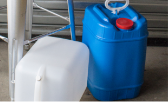Innovative Ways To Reduce Plastic Waste
Creative Ways to Reduce Plastic Waste
Plastic is everywhere. It's used in packaging materials, consumer goods, clothing, and numerous other places. But as convenient and economical as it may be, its overuse has led to a global environmental crisis. Why is this a problem that we need to address now? Because plastics take hundreds of years to decompose, and in the meantime, the discarded remnants of our consumer culture are polluting our waters and piling up in our landfills. Wildlife often mistake plastic for food, leading to injury or death, and microplastics are now found in soil, water, and even the human body, raising concerns about long-term health impacts. As our global community, spurred on by environmental scientists and educators, recognizes the urgent need to reduce our dependence on plastic and embrace more sustainable habits, we must band together with the understanding that every choice we make has the potential to worsen the plastic problem or contribute to the solution.
Reducing the Use of Single-Use Plastic Bags
Single-use plastic bags are a major contributor to litter and environmental degradation. These bags are often used for only a few minutes but go on to become a persistent environmental liability for centuries. Consumers can do their part to reduce their reliance on single-use plastic bags by committing to making the switch to reusable bags and containers. For instance, keeping bags made of canvas, jute, or recycled materials in your car or backpack ensures that you'll always have a shopping bag with you and won't need a plastic one from the store, while packing your lunch in reusable containers or in materials like waxed cotton can keep you from throwing zip-top bags in the trash every day.
To offer some perspective on the plastic bag problem we're facing today, consider the fact that it only took a couple of decades for single-use bags to make a noticeable harmful impact on our environment. Plastic grocery bags only started taking off in America in the early 1980s, replacing paper bags at supermarkets all over the country. But in the late 1990s and early 2000s, scientists and organizations began sounding the alarm about the damaging effects of plastic bags in our environment, and in 2007, San Francisco became the first U.S. city to ban single-use plastic bags.
- The Problem With Plastic Bags
- Statistics and Information on the Harm That Single-Use Plastic Bags Can Do
Making Smart Choices About Plastic Bottles
Plastic bottles are a convenient option for staying hydrated on the go, but single-use bottles that weren't disposed of properly are also among the top items found during environmental cleanups. One way to reduce your environmental impact is to carry reusable glass bottles that you can refill with water instead of buying bottled water. When you do buy plastic bottles, choose larger bottles and jugs to reduce the overall amount of packaging you use, and make sure to recycle them when you're done with them.
Cooking More Food at Home Instead of Buying Precooked Meals
Canned meals and convenience foods have long been available to the American consumer looking to save time and reduce the burden of home cooking, but today's precooked meals are often packaged in layers of plastic trays, film, and wrapping. Cooking at home with fresh ingredients greatly reduces the need for this abundance of packaging materials. In addition to reducing plastic consumption, home cooking promotes healthier eating habits and cost savings. Purchasing ingredients in bulk and storing them in reusable glass containers or washable produce bags can further reduce plastic use in the kitchen.
Shopping Secondhand and Choosing Sustainable Clothing
The apparel industry is a significant source of plastic pollution, especially through its use of synthetic fibers like polyester and nylon. These materials shed microfibers when washed, which then end up in waterways and negatively impact aquatic life. Instead of shopping for new clothes, choose secondhand items instead. This is a great way to keep garments out of landfills and reduce the demand for new production, which uses valuable resources. When buying new clothes, choose items made of natural fibers, such as organic cotton, hemp, or wool, or from recycled materials. These choices are environmentally responsible and are often more durable, too.
Consumers can also decide to keep the still-usable items that they are done with out of landfills by consigning them, donating them to local organizations, or posting them to give away on local buy-nothing groups. If an item isn't in wearable condition, consider repurposing it into something that will stretch out its life. For example, fabric can be cut into reusable cleaning cloths or dishrags.
Choosing Plastic-Free Laundry Detergents
Traditional laundry detergents often come in large plastic jugs or pods, some of which contain polyvinyl alcohol (PVA), a plastic polymer that may not completely biodegrade in wastewater systems. Fortunately, more eco-friendly alternatives, such as detergent sheets, refillable containers, or powders in cardboard boxes, are becoming increasingly available to consumers. These products are just as effective as traditional liquid laundry soap, making them an easy switch in households interested in reducing their plastic waste. Using wool dryer balls instead of disposable dryer sheets also cuts down on plastic packaging and chemical exposure.
Small Changes, Big Impact
Though changes to our routines can feel big, reducing the plastic waste that an individual or household contributes to our environment doesn't require a complete lifestyle overhaul, just a strong commitment to making more mindful, greener choices whenever possible. Whether it's carrying a reusable bag, cooking more at home, or buying gently used secondhand items instead of something new with tags off the rack, each small action adds up to something bigger. Every choice we make matters in the journey toward a cleaner planet.





































